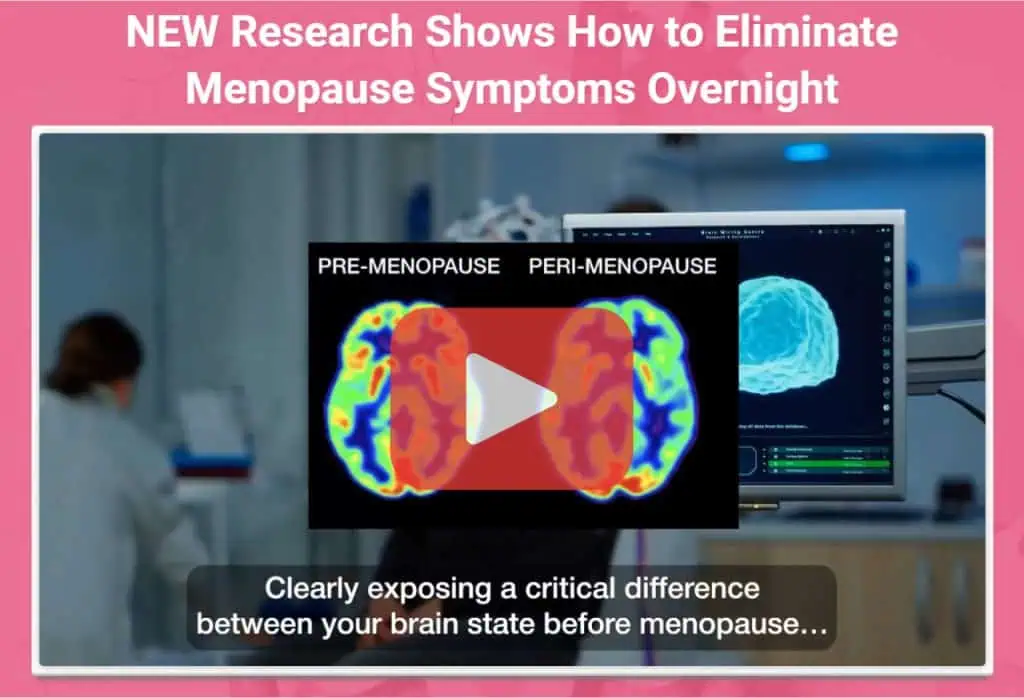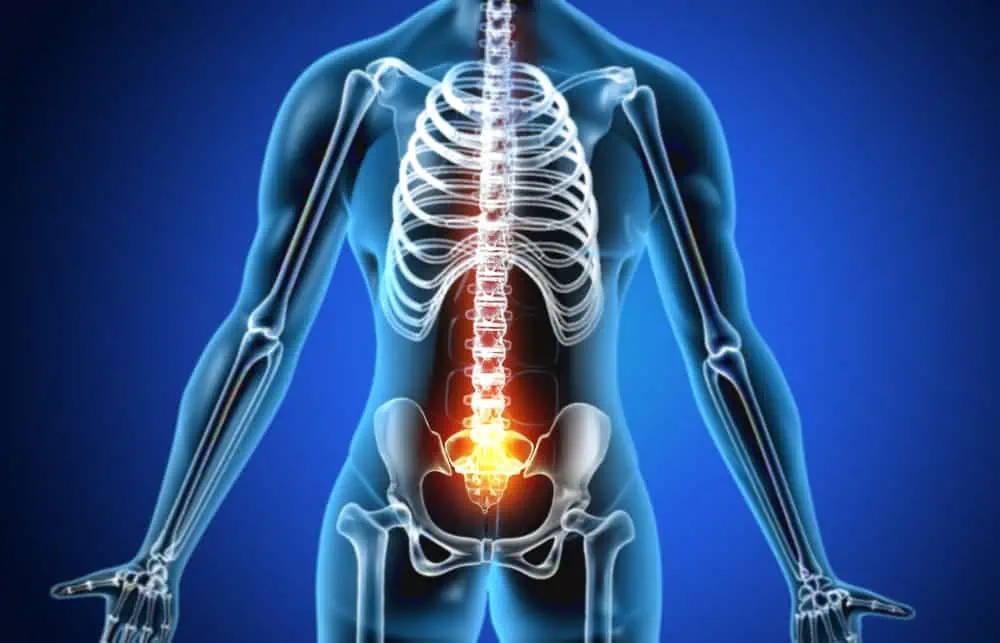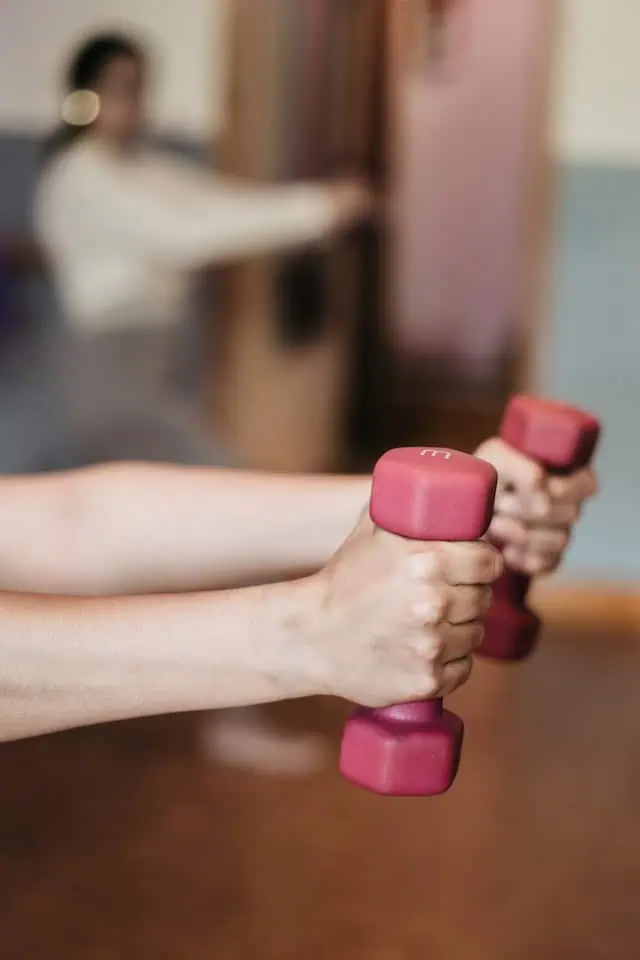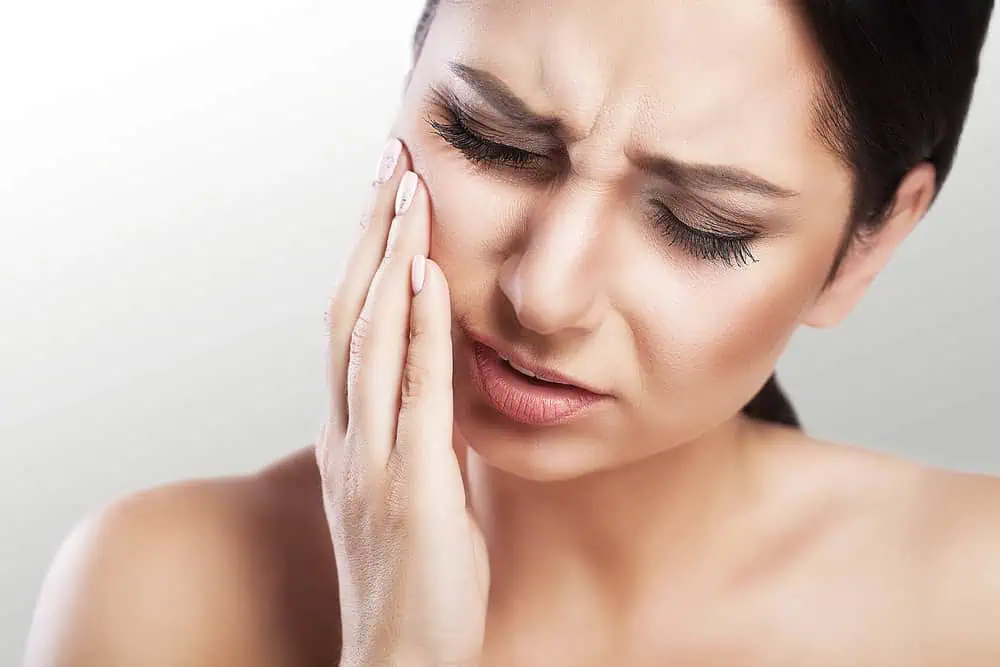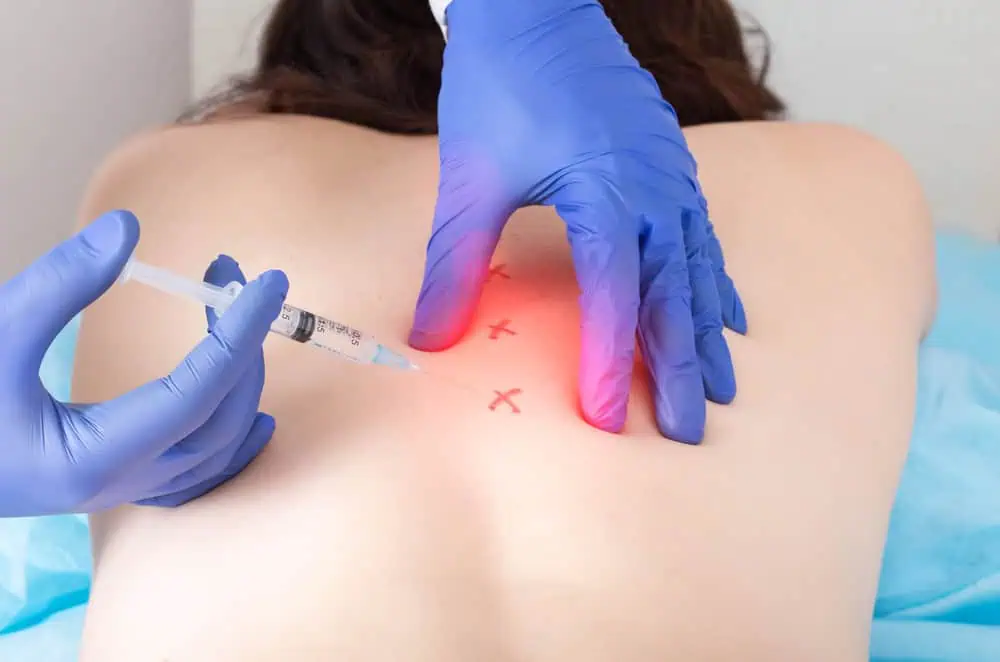Menopause often brings with it a variety of physical changes and symptoms that can affect a woman’s quality of life. One common yet less frequently discussed symptom is joint pain. As I transition through this natural phase, I find it important to recognize that hormonal fluctuations, particularly the decrease in estrogen levels, play a significant role in how my joints feel. The depletion of estrogen can lead to inflammation and increased sensitivity in the joints, manifesting as pain and discomfort, which sometimes significantly impact daily activities.

Understanding that menopause joint pain is a result of the body’s natural aging process and hormonal changes is crucial in seeking appropriate management strategies. Fortunately, there are both lifestyle modifications and medical interventions available that can help alleviate this pain. Complexities arise as this discomfort may be indicative of other conditions such as osteoarthritis or osteoporosis, which are more common in postmenopausal women. Therefore, it becomes essential to approach symptoms holistically, looking at treatment options that range from changes in diet and exercise to hormone replacement therapy and other medications potentially suggested by healthcare providers.
Key Takeaways
- Joint pain during menopause is often linked to decreased estrogen levels.
- Addressing menopause joint pain involves both lifestyle changes and medical treatments.
- It’s important to differentiate between menopausal joint pain and other related conditions.
Understanding Menopause and Joint Pain
In my examination of menopause and joint pain, I find that hormonal changes play a pivotal role in the onset of joint discomfort. Particularly, fluctuations in estrogen seem to be closely tied to the symptoms experienced by menopausal women.
The Role of Estrogen in Menopause
Estrogen is a hormone critical to the female reproductive system, and its levels fluctuate during perimenopause, eventually decreasing significantly during menopause. I’ve learned that this reduction in estrogen can affect various body systems, one of which is joint health. Estrogen is believed to have a protective effect on inflammation and joint tissue, and the decline in estrogen levels during menopause might lead to an increase in joint-related discomfort.
Symptoms of Menopausal Joint Pain
Symptoms I’ve observed associated with menopausal joint pain include stiffness, aches, and swelling. These pains can be more pronounced in the morning or after periods of inactivity. From my research, it’s clear that menopausal women may experience these symptoms in various joints, including the knees, shoulders, neck, and hands.
Link Between Hormones and Joint Health
The hormonal changes that occur during menopause, especially the decline in estrogen levels, appear to have a strong connection to joint health. While estrogen helps to maintain joint and bone health, its reduction can lead to increased inflammation and decreased muscular support around joints. Menopausal women often report that their joint discomfort coincides with other hormonal symptoms, suggesting a direct link between hormones and joint health. There’s also evidence that hormone replacement therapy may alleviate some of the joint pains experienced during this transition, underscoring the role of hormones in maintaining joint comfort.
Lifestyle and Home Remedies
In managing joint pain during menopause, adopting certain lifestyle and home remedies can be tremendously beneficial. By incorporating regular exercise, a well-balanced diet, and stress management techniques, I can take proactive steps in alleviating discomfort and maintaining my overall well-being.
Exercise and Menopause Joint Pain
Regular physical activity is essential for strengthening the muscles around my joints, improving flexibility, and potentially reducing inflammation. I focus on a mix of exercises to reap the maximum benefits. Swimming and walking are excellent low-impact options that can be easier on my joints compared to high-intensity workouts. Additionally, incorporating yoga into my routine supports both my physical and mental health by enhancing body awareness and offering stress relief.
- Low-impact activities:
- Swimming
- Walking
- Flexibility:
- Yoga
Diet and Nutritional Support
The food I consume plays a pivotal role in how I feel. An anti-inflammatory diet rich in omega-3 fatty acids often helps manage joint pain. I prioritize eating plenty of vegetables and foods fortified with calcium to support bone health. This approach not only helps with menopause symptoms but also contributes to my overall nutritional well-being.
- Omega-3 sources:
- Fatty fish
- Flax seeds
- Foods high in calcium:
- Dairy products
- Leafy greens
Stress Management and Relaxation Techniques
Stress can exacerbate joint pain, which is why I value the use of relaxation techniques. Mindfulness practices, such as meditation, have shown to be effective in easing the stress that can accompany menopause. I also find immersing myself in nature to be restorative, whether it’s through mindful walks or simply taking the time to relax in a natural setting. These practices help me maintain a neutral, balanced state of mind, which is beneficial for my physical health.
- Mindfulness practices:
- Meditation
- Deep breathing exercises
- Connection with nature:
- Mindful walks in the park
- Relaxing in a garden or natural environment
Medical Interventions and Treatments
In my experience, addressing joint pain during menopause can be multifaceted, from medication to hormone replacement therapy and alternative methods. Let’s explore the specifics of each intervention.

Pain Management Options
Medication is often the first line of treatment for menopause-related joint pain. Over-the-counter anti-inflammatory drugs, such as ibuprofen, can offer immediate relief by reducing inflammation and pain. It’s important to follow dosage instructions and consider any potential side effects.
Hormone Replacement Therapy (HRT)
Hormone Replacement Therapy (HRT) can alleviate systemic symptoms of menopause, which may include joint pain. By stabilizing fluctuating hormone levels, HRT can reduce inflammation and discomfort. However, it’s crucial for me to consider the risks and benefits of HRT with a healthcare professional before starting treatment.
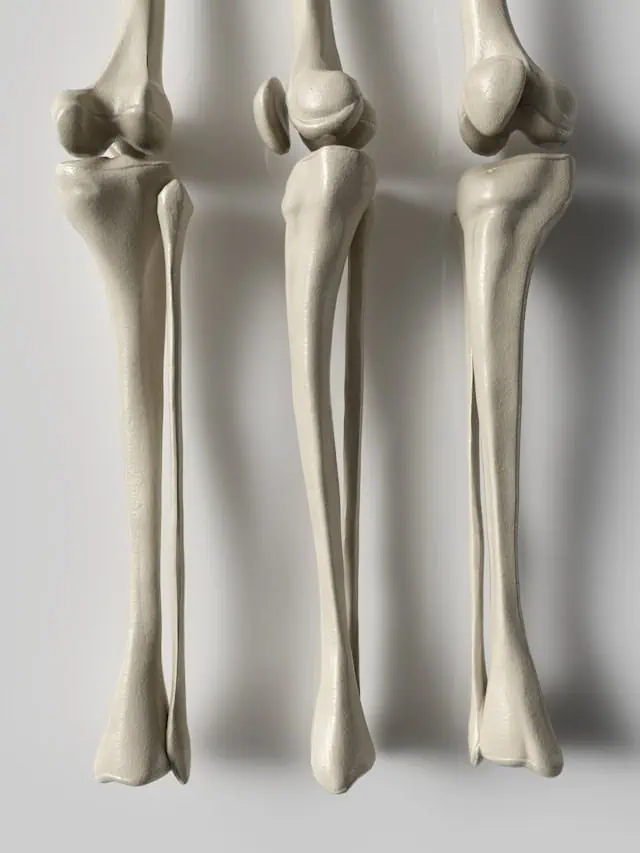
Alternative Therapies and Supplements
Lastly, I find that exploring alternative therapies and supplements can be beneficial. Phytoestrogens, for example, are plant-derived compounds that mimic estrogen, potentially offering a natural way to manage menopausal symptoms, including joint pain. Always consult a healthcare provider when considering supplements to ensure they’re appropriate for your situation.
Associated Conditions and Considerations
When discussing joint pain during menopause, it’s important to consider various health conditions that may be associated with this symptom. I’ll explore the impact of bone health, specific arthritis types, and other factors that may influence joint pain.
Bone Health and Osteoporosis
Bone health is critical to my overall wellbeing, especially as I approach menopause. The decline in estrogen levels can lead to decreased bone density and an increased risk of osteoporosis. This makes bones more susceptible to fractures. Additionally, as bone density decreases, joints can become more inflamed, leading to discomfort and an elevated risk of injury.
Arthritis and Autoimmune Diseases
Two of the most common forms of arthritis associated with menopause are osteoarthritis and rheumatoid arthritis. Osteoarthritis is related to the wear and tear of joint cartilage, often exacerbated by aging. On the other hand, rheumatoid arthritis is an autoimmune disease that causes inflammation and can lead to joint pain. Both conditions can be affected by hormonal changes during menopause and may lead to increased pain and stiffness in my joints.
Other Factors Impacting Joint Pain
Several additional factors can influence joint pain during menopause:
- Aging: Natural wear on the joints due to aging can increase joint pain.
- Injury: Previous injuries to a joint can make it more susceptible to pain during menopause.
- Overweight: Carrying excess weight places additional strain on my joints.
- Smoking: Smoking can contribute to inflammation and increased joint pain.
Maintaining a healthy lifestyle, including proper nutrition and regular exercise, can be beneficial in managing joint pain through menopause. Reducing smoking and managing weight may also have a positive impact on my joint health.

Preventive Strategies and Long-term Care
In managing menopause-related joint pain, I prioritize a proactive approach that includes regular physical activity, dietary adjustments, and consistent healthcare oversight to improve joint health and overall well-being.
Physical Activities and Exercise Routines
I advocate for a balanced exercise regimen that emphasizes low-impact activities to maintain joint health and bone density. Incorporating strengthening exercises such as resistance training can support and protect my joints by building muscle around them. I ensure these routines are a mix of flexibility, aerobic, and strength-training exercises, tailored to avoid undue stress on sensitive areas.
Nutritional Advice for Healthy Joints
A nutrient-rich diet plays a crucial role in supporting my joint health. I focus on consuming adequate protein to aid in the repair and maintenance of joint tissues. Foods high in omega-3 fatty acids, like salmon and flaxseeds, are staples in my diet for their anti-inflammatory properties. Additionally, I include calcium and vitamin D-rich foods to preserve bone density and prevent osteoporosis.
Routine Check-ups and Ongoing Management
I remain in close consultation with my healthcare provider for regular check-ups and to adapt my preventive strategies as needed. These visits are vital for early detection and management of any joint-related issues, enabling me to make informed lifestyle changes. My healthcare provider also guides me in understanding any necessary medication or treatments to ensure comprehensive long-term care.
Psychological Impact of Menopause Joint Pain
Menopause is not merely a physiological transition. The joint pain I experience is more than discomfort; it can deeply affect my mental health, influencing my mood, sleep, and overall well-being.

Coping with Chronic Pain and Depression
I understand that chronic pain is not just a series of aches. It grinds down my resilience over time, leading to a condition where depression often takes hold. When my joints ache continuously, the persistent pain chips away at my positivity and energy levels. I find myself having to develop coping strategies to manage not only the physical symptoms but also the mental toll they take. Fatigue becomes both a cause and an effect of my depressed state, and this cycle can be challenging to interrupt.
Addressing Anxiety and Sleep Issues
In dealing with menopause, anxiety often creeps up in response to the uncertainty of when a wave of joint pain or night sweats might hit. This anxiety can be compounded by sleep issues, as pain disrupts my rest, leaving me tired and less equipped to manage stress the following day. I take steps like establishing a regular sleep schedule and engaging in relaxation techniques to combat these effects. Working on these aspects is crucial for maintaining mental equilibrium and not letting anxiety or disrupted sleep rob me of my quality of life.
Understanding and Managing Symptoms
In managing menopause-related joint pain, it’s crucial to recognize specific symptoms and seek appropriate relief. I’ll guide you through identifying what you may experience and the steps you can take to alleviate discomfort.
Identifying Common Symptoms
During menopause, I’ve found that joint pain is a common complaint, often affecting the knees, hips, and hands. The pain may present as a dull ache or a sharp, stabbing sensation. It’s not unusual for my joints to feel swollen or exhibit swelling, particularly in areas like the shoulders and elbows. Alongside joint issues, muscle stiffness and back pain can occur. It’s important for me to observe any changes in my joints, such as increased tenderness or difficulty moving.
In some cases, I may experience pain radiating down my spine to the neck, highlighting the interconnectedness of the musculoskeletal system. Paying attention to these symptoms is the first step towards managing them effectively.
Seeking Relief from Menopause Joint Pain
To combat the discomfort, I have incorporated several methods into my routine.
- Exercise: Regular physical activity, including low-impact exercises like Pilates, can strengthen the muscles around my joints, providing support and easing stress on the joints. This approach is particularly beneficial for the spine and neck areas.
- Heat and Cold Therapy: Applying heat can relax my muscles and increase blood flow, which can reduce muscle pain around joints. Cold packs, on the other hand, are great for reducing swelling and inflammation.
- Diet: Eating a balanced diet rich in anti-inflammatory foods helps me manage joint pain. I focus on including foods with omega-3 fatty acids and antioxidants to support joint health.
If the pain in my joints, such as in my knees or hips, becomes severe, consulting a healthcare professional is essential. They can provide specific medical interventions or recommend physical therapy tailored to my needs. For persistent or severe back pain, professional assessment to rule out other causes apart from menopause is advisable.
A multi-faceted approach to handling menopausal joint pain can significantly improve my quality of life. Physical activity, diet, and appropriate therapies play a crucial role in bringing me relief.
Supplementary Information and Resources
In my quest to provide comprehensive knowledge, I’ve unearthed support networks and cutting-edge research to aid those experiencing menopause-related joint pain. These resources offer not just enlightenment on the subject, but practical solutions and a sense of community for impacted individuals.
Support Networks and Community Resources
Finding community support is integral for navigating the challenges of menopause. I’ve discovered forums and support groups dedicated to menopause where individuals can share experiences and advice. Through these, one can learn about various interventions and activities that alleviate joint pain. Additionally, heart health is a consideration during menopause, and many organizations offer guidelines to protect heart and overall health—it’s crucial to find a support system that acknowledges these interconnected aspects of wellbeing.
Recent Research and Emerging Therapies
Numerous studies underscore the benefits of hormone replacement therapy (HRT) for managing symptoms like joint pain. I’ve reviewed literature that points toward medications and natural remedies—such as turmeric, known for its anti-inflammatory properties—as possible aids. Dietary interventions can include omega-3 rich fish like tuna, which may counteract inflammation. Additionally, tailored activities and local application of ice or heat through ice packs or warm compresses can provide relief. I’ve also noted emerging data linking menopause with fibromyalgia, guiding the development of targeted therapies. With constant innovation, the future looks promising for those seeking relief from menopausal joint pain.
Frequently Asked Questions
I’ve gathered common concerns about menopausal joint pain and provided information grounded in current research and expert opinion.
What are the common signs and symptoms of joint pain associated with menopause?
Joint pain during menopause often manifests as stiffness, swelling, and discomfort in various joints. It’s particularly prevalent in the morning or after periods of inactivity.
Which supplements are recommended for alleviating joint pain during menopause?
For joint pain relief during menopause, supplements such as omega-3 fatty acids, calcium, and vitamin D are advisable. Consult a healthcare professional before beginning any supplement regimen.
Are there effective treatments for managing joint pain in menopausal women?
Yes, treatments range from lifestyle changes like regular exercise and a balanced diet to pain relief medications and physical therapy. Discussing options with a healthcare provider is essential for personalized treatment.
What role does estrogen deficiency play in the development of joint pain?
Estrogen deficiency during menopause can contribute to inflammatory responses leading to joint pain. The decline in estrogen may also affect bone health and increase discomfort.
Can hormone replacement therapy (HRT) help in reducing menopausal joint pain?
Hormone replacement therapy may help in reducing joint pain for some women by addressing the estrogen deficiency that accompanies menopause. It’s important to weigh the benefits against the risks with a healthcare provider.
Is menopausal joint pain a permanent condition, or will it resolve over time?
Menopausal joint pain is not necessarily permanent. Many women find that symptoms improve post-menopause or can be managed effectively with the appropriate strategies.

